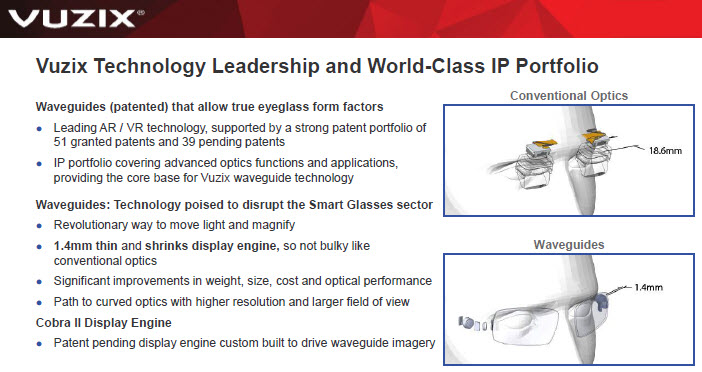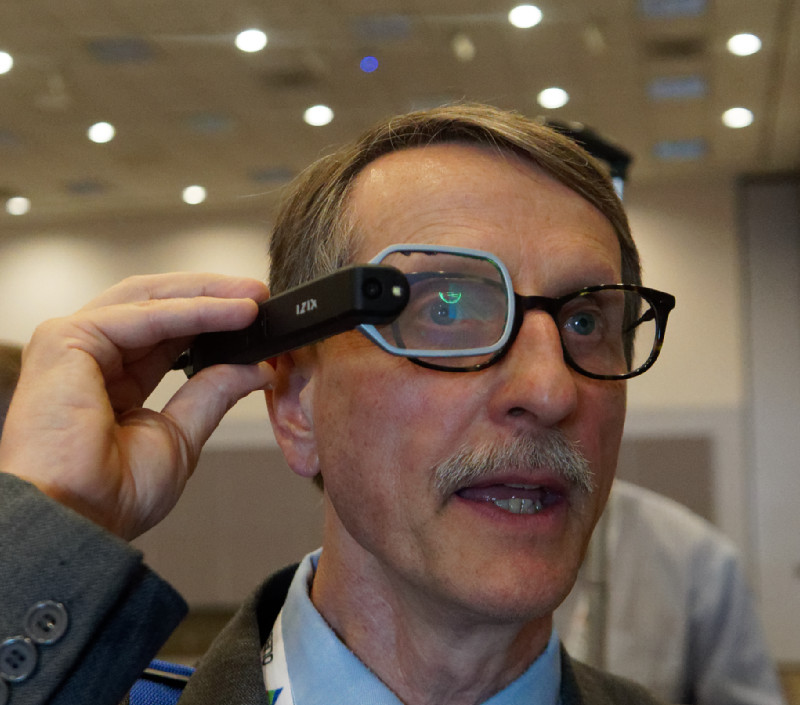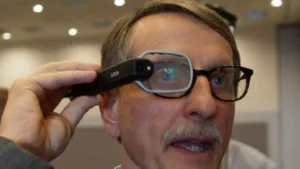 Paul Travers is President and CEO of Vuzix based in Rochester and the company is 20 years old. It has offices in the UK and Japan and investors include Intel Capital. After many years, the market is finally taking off for the company and at this stage, and for the firm, AR is more important than VR.
Paul Travers is President and CEO of Vuzix based in Rochester and the company is 20 years old. It has offices in the UK and Japan and investors include Intel Capital. After many years, the market is finally taking off for the company and at this stage, and for the firm, AR is more important than VR.
Why has it taken so long and why now, Travers asked? He explained the story of the rice on the chequer board – the power of exponentials. Exponential progress is what has happened to IT and processing. Memory and CPUs are now incredibly powerful, small and cheap. Improvements in connectivity are also proceeding very fast.
The problem is that the business at the moment is not appropriate for consumers. Over the years, Vuzix has learned what works and what doesn’t, Travers said. You can now make AR headets that are light, powerful and useful for 8 hours and that makes them useful for business users.
The early market for Vuzix was in the military but then in 2013 it first shipped the M100 for enterprise applications where users want to do things with their hands. 40% of top companies have bought from the firm, although some are still in the testing phase. Development is now up to the M300, which is now shipping. Simple things are often surprisingly important. Vuzix added a flashlight to the camera, and the system is basically a “wearable computer on a stick”.
The firm has 250 VARs and System Integrators building applications for its platform. Vuzix also has remote update facilities to allow systems to be upgraded.
In the industrial market, products have to be adaptable to fit the needs of different users. The head set has to be used with or without hard hats or other options – it must go on the left or right and work with prescription lenses or safety glasses. Vuzix believes there will be 14.5 million users by 2025 and the market will be for new sales until 2021 then the market will basically be for replacements.

Tests by logistics companies have shown that picking can be 35% faster using AR glasses and Travers showed a video from DHL and Ricoh. Now, those working on the project are adding serial number tracking to the application.
Airbus has found a 500% productivity boost with zero errors because of the checking that is possible using AR.
The hardware business is still in the early days, the equivalent of the early cell phone days. To get to high forecasts of analysts, to as much as $120 billion, the glasses have to be very light and fashionable.
Vuzix uses a 0.2″ imager to a waveguide to create the image. Users won’t go back to the old way, once they are used to having the information from AR and Travers has many examples.
The M3000 and the Blade 3000 are new devices which we reported on from MWC (Showstoppers is Busy – Blame the Beer!). Systems need a large screen and comfortable device so that you are happy to leave your phone in your pocket.
Vuzix makes its waveguides in Rochester, the rest of the hardware in China. It has a partner Toshiba (whose products are marked ‘powered by Vuzix’). In 2018, everything from Vuzix will be based on waveguides.
 Chris tried out the Vuzix M3000 ‘computer on a stick’ system at the investor’s conference reception. Image:Meko
Chris tried out the Vuzix M3000 ‘computer on a stick’ system at the investor’s conference reception. Image:Meko

